#marble greek statue
Text
The Atlas statue, derived from Greek mythology, depicts the Titan Atlas bearing the celestial sphere upon his shoulders.
Symbolizing strength, endurance, and the weight of the world, this iconic sculpture transcends time and space, inviting us to ponder the mysteries of the universe and the resilience of the human spirit. And the marble Atlas statue embodies the human experience of carrying burdens and overcoming adversity, inspiring us to persevere in the face of challenges.

#atlas statue#greek statue#famous statue#roman statue#marble greek statue#classical statue#atlas sculpture#atlas carrying the world statue#atlas holding the sphere statue
2 notes
·
View notes
Text

Aligned
2K notes
·
View notes
Text

Jerôme Duquesnoy (II) (1602-1654)
"The Abduction of Ganymede" (c. 1650-1654)
#sculptures#art#artwork#mythological sculpture#greek mythology#jerôme duquesnoy ii#jerome duquesnoy ii#marble#fine art#flemish artist#statue#male figure#male portrait#portrait of a boy#eagle#eagles#birds#animals#drapery#1650s#mid 1600s#mid 17th century#aesthetic#aesthetics
404 notes
·
View notes
Text

Apollo and Diana, an 1848 marble statue by American artist and sculptor Thomas Crawford.
This captures their essence quite well imo!
#artemis#goddess artemis#goddess diana#marble statue#marble sculpture#apollo#apollon deity#god apollo#greek gods#greek mythology#ancient greek#greek history#roman mythology#roman gods#roman history#rome#spqr#Thomas Crawford#Diana#theoi
404 notes
·
View notes
Text
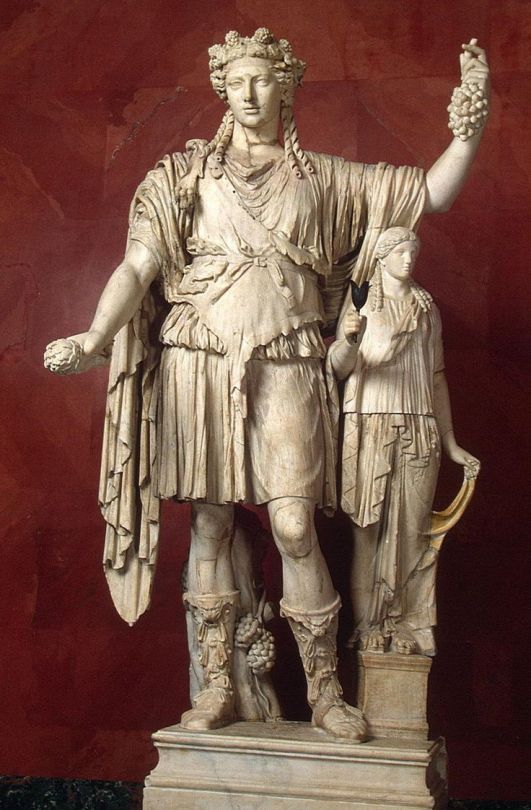
Roman marble statue of Dionysus (Bacchus), God of wine, patron of wine making.
Roman copy of a Greek original of late 4th century BC.
from The Collection of The Hermitage, St Petersburg
#roman art#dionysus#bacchus#marble statue#art history#ancient art#ancient artifacts#antiquities#antiquity#ancient rome#roman history#roman empire#roman republic#rome#greek art#greek mythology
542 notes
·
View notes
Text
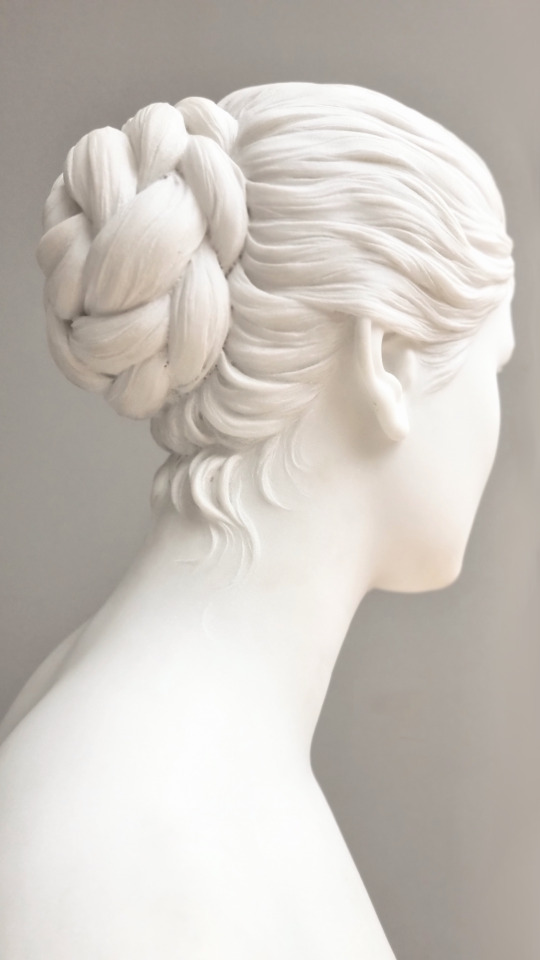
Carl Schlüter, Fraulein Bierling (1883)
Displayed at Albertinum, Dresden
Picture credits belong to this blog
#seeing her in this room made me realize what Pygmalion felt like#she looks so soft#art#sculpture#olga's diary#marble sculpture#19th century art#my photography#german art#art gallery#women in art#classical art#neoclassicism#greek aesthetic#neoclassical#marble statue#sculpture art#sculptures#art history#light academia#light academia aesthetic#dark academia aesthetic#dark academia art#dark academia#light aesthetic#princesscore
3K notes
·
View notes
Photo
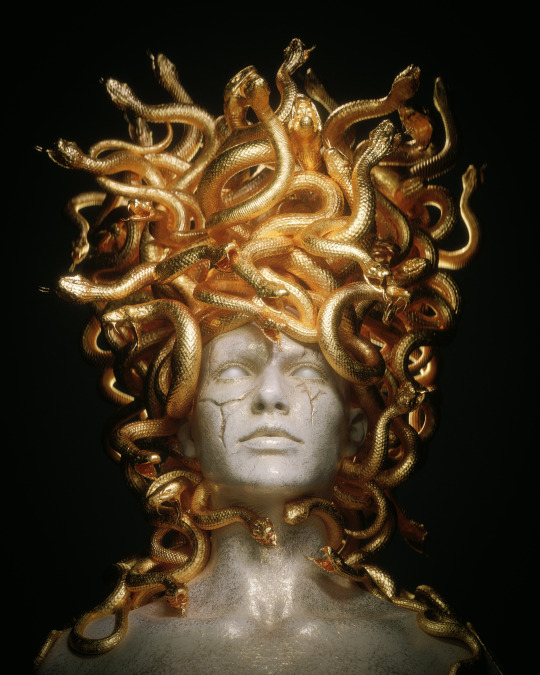
Medusa
Transformation through Punishment
#billelis art#Medusa#medusa art#medusa mythology#Greek Mythology#greek statues#serpents and snakes#gorgon#marble statue#Golden Art
4K notes
·
View notes
Text


currently obsessed with this gorgeous statue of Melpomene muse of tragedy
Roman statue of Melpomene, 2nd century A.D.
#greek sculpture#greek art#greek gods#greek myth#greek mythology#greek bust#tagamemnon#marble statue#art#historical art#statue#marble bust#melpomene#apollo#greek goddesses#illiad
191 notes
·
View notes
Text

“MARBLE STATUE OF EIRENE”
(THE PERSONIFICATION OF PEACE)
ROMAN | CIRCA A.D. 14–68 | MARBLE | H: 69 3/4”
198 notes
·
View notes
Text
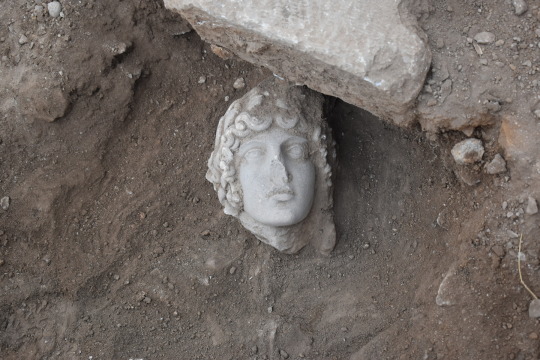
The Marble Head of Apollo Unearthed in Greece
The excavation, carried out by a group of students of the Aristotle University of Thessaloniki in the archaeological site of Philippi Kavala, brought to light important findings. Among other things, they discovered a rare head of Apollo dating back to the 2nd or early 3rd century AD.
The statue dates back to the 2nd or early 3rd century AD and it probably adorned an ancient fountain.
Natalia Poulos, Professor of Byzantine Archaeology, led the excavation, which included fifteen students from the Aristotle University of Thessaloniki (11 undergraduates, 2 master’s, and 2 PhD candidates), Assistant Docent Anastasios Tantsis, and Professor Emeritus of Byzantine Archaeology Aristotle Mendzo.
Archaeologists say, this year the excavation continued east of the southern main road (decumanus) at the point where it meets the northern axis of the city (the so-called “Egnatia”). The continuation of the marble-paved road was revealed, on the surface of which a coin (bronze phyllis) of the emperor Leo VI (886-912) was found, which helps to determine the duration of the road’s use. At the point where the two streets converge, a widening (square) seems to have been formed, dominated by a richly decorated building.
Archaeologists say evidence from last year’s excavations leads them to assume it was a fountain. The findings of this year’s research confirm this view and help them better understand its shape and function.

The research of 2022 brought to light part of the rich decoration of the fountain with the most impressive statue depicting Hercules as a boy with a young body.
The recent excavation (2023) revealed the head of another statue: it belongs to a figure of an ageneous man with a rich crown topped by a laurel leaf wreath. This beautiful head seems to belong to a statue of the god Apollo. Like the statue of Hercules, it dates from the 2nd or early 3rd century AD and probably adorned the fountain, which took its final form in the 8th to 9th centuries.
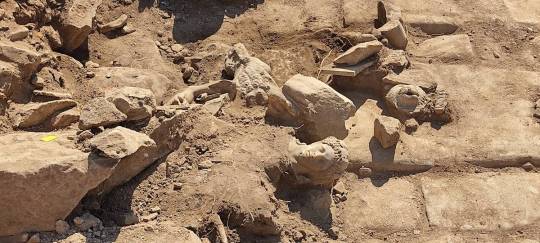
In classical Greek and Roman religion and mythology, Apollo is one of the Olympian gods. He is revered as a god of poetry, the Sun and light, healing and illness, music and dance, truth and prophecy, and archery, among other things.
Philip II, King of Macedon, founded the ancient city of Philippi in 356 BC on the site of the Thasian colony of Crenides near the Aegean Sea. The archaeological site was designated a UNESCO World Heritage Site in 2016 for its outstanding Roman architecture, urban layout as a smaller reflection of Rome itself, and significance in early Christianity.
By Oguz Buyukyildirim.
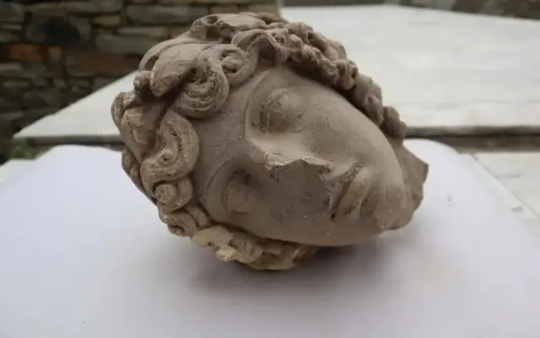
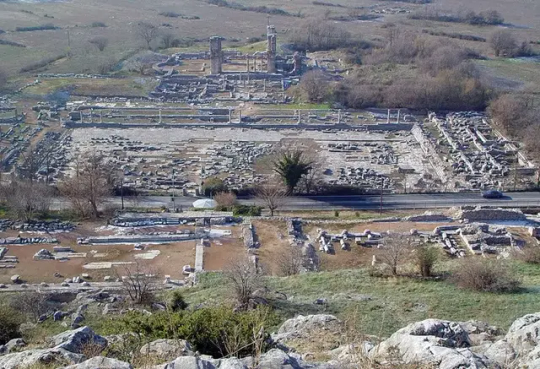
#The Marble Head of Apollo Unearthed in Greece#Philippi Kavala#marble#marble statue#ancient artifacts#archeology#archeolgst#history#history news#ancient history#ancient culture#ancient civilizations#ancient greece#greek history#greek art
206 notes
·
View notes
Text

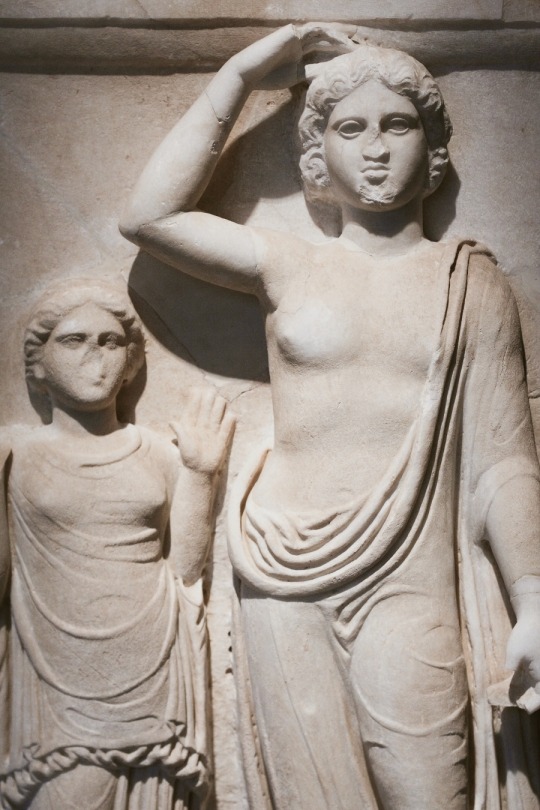
Marble votive stele featuring god Apollon and the dedicator.
Temple of Apollo, Amphanae
Classical Period, 4th century BC
151 notes
·
View notes
Text
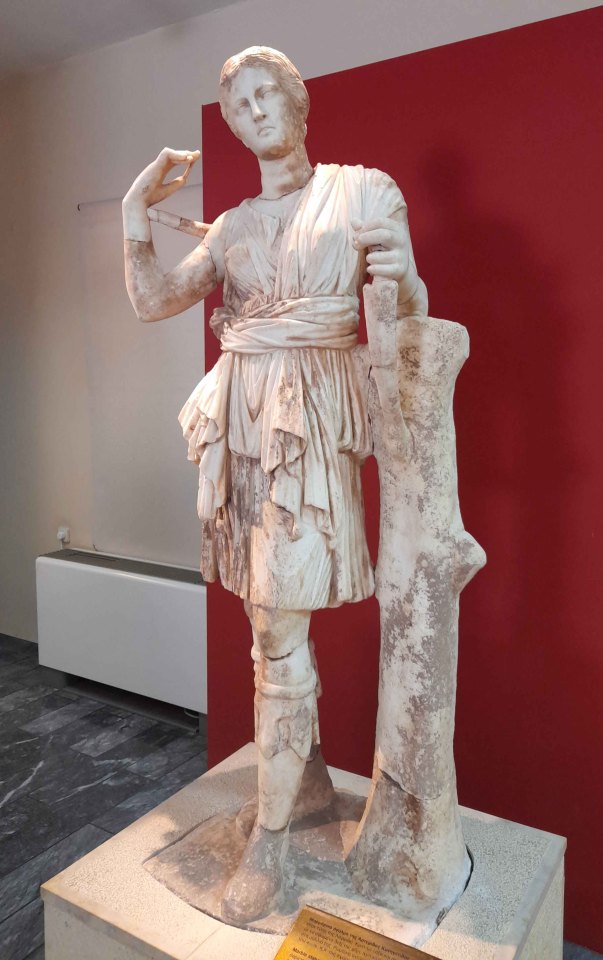


Artemis statue from the archeological museum of Messini, Greece.
#artemis#ancient art#greek mythology#greek goddess#goddess of the hunt#theoi#statue#marble#messini#greece
559 notes
·
View notes
Text

Hellenistic sculptor: Epigonus (Greek: Ἐπίγονος), born in Pergamon, Türkiye
Ludovisi Gaul (The Galatian Suicide), 2nd century AD
National Roman Museum – Palazzo Altemps, Rome
This dramatic statue epitomizes the mixing of cultures in the Hellenistic Age. The statue is a Roman copy in marble of a now lost Greek bronze original made at Pergamum in Anatolia by a Greek sculptor. The artist tells the tragic story of a defeated Celt (Gaul). Rather than be captured alive, he has just killed his wife and is at the precise moment of taking his own life. In typically Hellenistic style, the artist combines anatomical accuracy with psychological agony.
#The west encounters & transformations third edition#Hellenistic#Epigonus#greek#pergamon#turkey#classical art#ludovisi gaul#the galatian suicide#gaul#gaulish#celtic#celt#germanic tribes#art#fine art#european art#europe#european#fine arts#europa#mediterranean#western civilization#the west#sculpture#statue#male figure#galatian celt#marble statue#marble
87 notes
·
View notes
Text
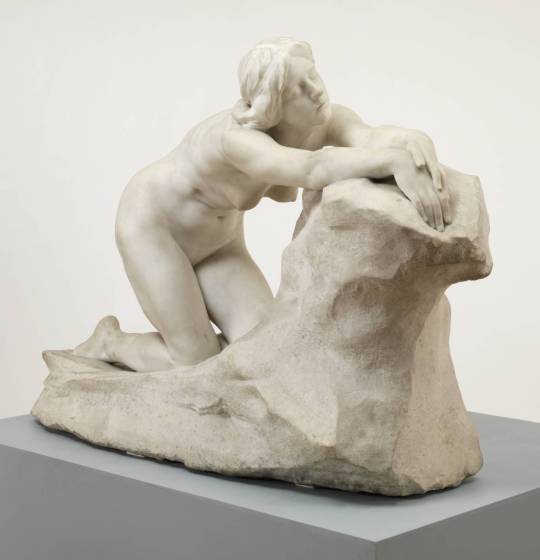
Harold Parker (1873-1962)
"Ariadne" (1908)
Marble
Located in the Tate Britain, London, England
#sculptures#art#artwork#mythological sculpture#female figure#harold parker#marble statue#fine art#tate gallery#museum#art gallery#australian artist#portrait of a woman#greek mythology#despair#anguish#distress#distressed#early 1900s#early 20th century
603 notes
·
View notes
Text



I've always loved how they loved
#marble statue#marble sculpture#greek mythology#bacchus#ariane#antique roman#roman sculpture#greek god#roman mythology#idgaf abiut the distinction CRY ABOUT IT#besties
218 notes
·
View notes
Text


Bacchus, Jacopo Sansovino (Jacopo Tatti), 1515
#art history#art#italian art#aesthethic#greek mythology#ancient greece#roman mythology#bacchus#dyonisus#jacopo sansovino#jacopo tatti#bargello#bargello museum#florence#16th century#sculpture#marble#statue
201 notes
·
View notes